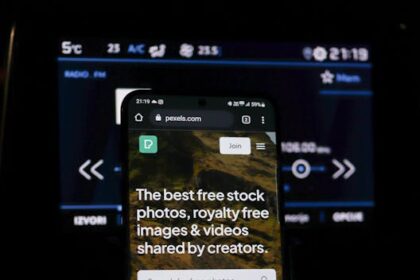The Indelible Mark: Why Storytelling Dominates Web Copy
The digital landscape, a maelstrom of flashing pixels and fleeting attention spans, demands more than mere information dissemination. It craves connection, recognition, and resonance. In this hyper-competitive arena, the power of storytelling emerges not as a whimsical add-on, but as the fundamental architecture upon which effective web copy is built. It transcends simple persuasion, embedding brands, products, and services within the deeper narrative structures that govern human understanding and memory. This is not about fabricating tales, but about uncovering and articulating the inherent stories that lie within every product, service, and, most importantly, every customer.
The Neurological Imperative: Why Our Brains Crave Stories
To comprehend the profound impact of storytelling on web copy, one must first grasp its biological and psychological underpinnings. The human brain is hardwired for narrative. From ancient cave paintings to modern cinematic blockbusters, stories have served as our primary mode of transmitting knowledge, values, and experiences across generations. This innate predisposition isn’t just cultural; it’s neurological.
When we process information presented as a story, our brains react differently than when presented with mere facts or statistics. Research in neuro-marketing and cognitive psychology reveals several key phenomena:
- Neural Coupling: When someone tells a story, the listener’s brain activity mirrors the speaker’s. This phenomenon, known as neural coupling, suggests that stories literally align the minds of the storyteller and the audience, fostering empathy and shared understanding. In web copy, this means the reader isn’t just passively consuming information; they are actively experiencing the narrative, aligning their thoughts and feelings with the brand’s message.
- Oxytocin Release: Compelling narratives, particularly those that evoke empathy or show characters overcoming adversity, can trigger the release of oxytocin, often referred to as the “trust hormone.” This neurochemical fosters feelings of connection, empathy, and generosity. For web copy, this translates into increased trust in the brand, a willingness to engage, and a deeper emotional bond that transcends rational decision-making. Customers are more likely to purchase from brands they trust and feel connected to.
- Cortical Activity Beyond Language Processing: While factual data primarily activates the language processing centers of the brain (Broca’s and Wernicke’s areas), stories engage a far broader range of cortical regions. Sensory details within a narrative can activate the motor cortex (if describing action), the visual cortex (if describing a scene), or the olfactory cortex (if describing a smell). This holistic engagement makes stories more vivid, more memorable, and more impactful than abstract data. The brain doesn’t just hear the words; it experiences the story.
- Enhanced Memory Recall: Information presented within a narrative context is significantly easier to remember than disconnected facts. Stories provide a framework, a beginning-middle-end structure, that helps organize information in a coherent and retrievable manner. Facts woven into a story become embedded within this structure, making them sticky and resistant to decay. This is crucial for brand recall and message retention in the crowded digital space.
- Reduced Resistance to Persuasion: When presented with a direct sales pitch, consumers often erect mental barriers, becoming skeptical and defensive. Stories, however, bypass these defenses. They invite the reader in, allowing them to draw their own conclusions and feel as though they are discovering the truth for themselves. This non-confrontational approach makes the message more palatable and inherently more persuasive, leading to higher conversion rates without overt “selling.”
By tapping into these fundamental neurological processes, storytelling in web copy transforms a transactional interaction into an immersive, emotionally resonant experience. It moves beyond “what” a product does to “how” it transforms a life, “why” a brand exists, and “who” benefits from its offerings.
The Essential Elements of a Compelling Web Story
Every effective story, whether ancient myth or modern web copy, contains core components that drive its impact. Understanding these elements is crucial for crafting narratives that resonate with your target audience.
1. The Protagonist (The Customer, Not the Brand)
Perhaps the most common mistake in corporate storytelling is placing the brand or product at the center of the narrative. In effective web copy, the true protagonist is always the customer. They are the hero on a journey, facing challenges and seeking solutions. The brand, product, or service acts as the mentor, the guide, or the magical tool that empowers the protagonist to achieve their goals.
- Defining Your Protagonist: Who is your ideal customer? What are their demographics, psychographics, pain points, aspirations, and daily struggles? Developing detailed buyer personas is paramount. The more specific you are about your protagonist, the more precisely you can tailor their narrative.
- Identifying Their “Ordinary World”: What does your protagonist’s life look like before they encounter your solution? This is their status quo, often characterized by a specific problem, unfulfilled desire, or daily frustration. Paint a vivid picture of this “ordinary world” so the reader can see themselves within it.
- Their Call to Adventure: What event or realization prompts the protagonist to seek change? This could be a recurring problem, a new aspiration, or a growing dissatisfaction. Your copy should articulate this “call” in a way that resonates deeply with the reader’s own experiences.
2. The Conflict (The Problem Your Product Solves)
A story without conflict is merely a description. Conflict is the engine of narrative, creating tension, stakes, and the motivation for change. In web copy, the conflict is the problem, pain point, or unmet need that your target audience faces.
- External Conflict: What tangible problems do your customers encounter? (e.g., “My old software is too slow,” “I can’t find affordable, healthy food,” “My skin is breaking out.”) These are often the easiest to identify and articulate.
- Internal Conflict: What are the emotional or psychological struggles associated with the external problem? (e.g., “I feel overwhelmed and unproductive,” “I feel guilty about not eating well,” “I feel self-conscious and embarrassed.”) These are often more powerful because they tap into deeper human emotions and desires.
- Existential Conflict: What are the deeper, often unarticulated, fears or aspirations related to the problem? (e.g., “I worry about falling behind in my career,” “I want to live a long, healthy life to see my grandchildren grow up,” “I want to feel confident and beautiful.”) This level of conflict connects to core human values and existential concerns.
Your web copy should articulate these conflicts clearly and empathetically, demonstrating that you understand the customer’s struggles intimately. This builds immediate rapport and validates their experience.
3. The Mentor/Guide (Your Brand/Product/Service)
Once the protagonist and their conflict are established, the mentor appears. This is where your brand, product, or service steps into the narrative. Crucially, your brand is not the hero; it is the enabler of the hero’s journey.
- Empathy and Authority: The mentor offers empathy by acknowledging the protagonist’s struggle and authority by presenting a credible solution. Your copy should articulate how your brand understands the problem better than anyone else and possesses the unique expertise or features to solve it.
- The Path Forward: The mentor provides a clear path or plan for overcoming the conflict. This translates to the features and benefits of your product, framed not as a list of specifications, but as steps the protagonist can take to achieve their desired outcome.
- Confidence and Trust: The mentor inspires confidence, assuring the protagonist that success is possible. This is built through testimonials, social proof, guarantees, and a consistent brand voice that exudes competence and reliability.
4. The Resolution (The Desired Outcome/Transformation)
The resolution is the payoff, the “happily ever after” or the transformed “new normal” that the protagonist experiences after using your product or service. This is not just about solving the problem; it’s about the transformation that occurs.
- Emotional Payoff: How does the customer feel after using your solution? (e.g., “Relieved,” “Empowered,” “Confident,” “Peaceful,” “Excited.”)
- Tangible Benefits: What specific, measurable improvements occur? (e.g., “Saved 10 hours a week,” “Lost 15 pounds,” “Increased sales by 30%.”)
- New “Ordinary World”: Describe the customer’s life after the transformation. This should be a vivid contrast to their initial “ordinary world,” showcasing the freedom, success, or happiness they now enjoy. This is the aspirational vision your web copy should paint.
5. Authenticity and Vulnerability
Even the most perfectly structured narrative will fall flat if it lacks authenticity. Modern consumers are adept at detecting corporate jargon and contrived narratives. Your stories must feel genuine, transparent, and relatable.
- Real People, Real Stories: Whenever possible, use actual customer testimonials, case studies, or employee stories. These provide tangible proof and infuse your copy with human connection.
- Embrace Imperfection (Sensibly): Brands don’t need to be flawless. Sometimes, sharing a challenge the company overcame or a lesson learned can build immense trust and relatability. This doesn’t mean airing all your dirty laundry, but showing that your brand is run by real people who face real challenges.
- Consistent Brand Voice: Your storytelling should align with your overall brand voice and values. Inconsistency erodes trust and makes the narrative feel inauthentic.
By meticulously crafting these elements, web copy moves beyond merely informing to deeply engaging, creating an emotional resonance that drives action and fosters loyalty.
Applying Storytelling Across Key Web Copy Types
Storytelling isn’t confined to a single “About Us” page; it should permeate every facet of your website, adapting its form and focus to suit the specific purpose of each page.
1. Homepage Copy: The Grand Narrative Unveiled
The homepage is often the first interaction a visitor has with your brand. Its primary role is to immediately answer: “What problem do you solve for me?” and “Why should I care?”
- The Hero’s Challenge: Start by acknowledging the core pain point or aspiration of your ideal customer. Use evocative language to paint a picture of their current struggle or desire.
- Example (SaaS for small businesses): “Tired of juggling spreadsheets and losing track of client communication? Imagine a world where every lead is nurtured, every task tracked, and your business growth is effortless.”
- The Brand as Guide: Briefly introduce your unique solution, positioning it as the ultimate tool or partner for overcoming their challenge.
- The Transformed Future: Offer a glimpse into the desired future state. What will their life or business look like after engaging with your brand?
- Example (Eco-friendly clothing brand): “From guilt-ridden fast fashion choices to a wardrobe that reflects your values – discover sustainable style that empowers you and protects our planet.”
- Clear Call to Action: Guide them to the next chapter of their journey – exploring products, learning more, or signing up.
2. Product/Service Pages: The Solution’s Saga
These pages delve deeper into the specific story of how your product or service transforms the customer’s experience.
- Problem-Solution Arc: Begin by reiterating the specific problem this product addresses. Then, introduce the product as the elegant solution, detailing how its features directly resolve the conflict.
- Instead of: “Our blender has a 1200-watt motor and multiple speed settings.”
- Try: “Frustrated by chunky smoothies and under-blended soups? Our ProBlend X, with its revolutionary 1200-watt motor and precision speed control, pulverizes even the toughest ingredients, ensuring silky-smooth perfection every time. Imagine waking up to effortlessly blended, nutrient-packed breakfast in seconds.”
- User Stories/Case Studies: Integrate mini-narratives or quotes from satisfied customers who have experienced the transformation firsthand.
- “A Day in the Life” Scenarios: Describe how the product integrates into the customer’s daily routine, showing its benefits in a tangible, relatable context.
- The “Before & After”: Use imagery and descriptive language to contrast the customer’s life before and after using the product.
3. About Us Pages: The Brand’s Origin Story
This is where your brand’s unique narrative shines. It’s not a resume; it’s a story of purpose, passion, and progression.
- The “Why”: Why was your company founded? What problem did you see in the world? What passion drove you to create this solution? This is your brand’s inciting incident.
- Example: “Our founder, Sarah, spent years battling harsh chemical cleaners that irritated her sensitive skin. Frustrated by the lack of genuinely safe and effective alternatives, she set out on a mission…”
- The Journey/Struggle: Briefly describe the challenges, innovations, and milestones along the way. This adds authenticity and makes the brand more human.
- The “Who”: Introduce the people behind the brand as characters in this story. Highlight their expertise, values, and commitment.
- The Vision (Your “After”): What future are you striving to create for your customers and the world? This connects your brand’s story to a larger purpose.
4. Blog Posts and Content Marketing: Endless Narrative Possibilities
Blogs are ideal for long-form storytelling, exploring themes, educating, and building community.
- Customer Journey Stages: Tailor stories to different stages of the customer journey (awareness, consideration, decision).
- Awareness: “The Unseen Stress: How Undiagnosed Neck Pain Affects Your Productivity.” (Problem-focused story)
- Consideration: “From Desk Ache to Daily Bliss: Sarah’s Journey with Our Ergonomic Chair.” (Solution-focused customer testimonial)
- Decision: “Is Our Ergonomic Chair Right for You? A Deep Dive into Its Impact on Posture and Health.” (Benefit-rich narrative showing transformation)
- Personal Anecdotes: Share founder stories, employee experiences, or behind-the-scenes glimpses that reveal the human side of your brand.
- Industry Trends as Narratives: Frame complex industry changes or new technologies as stories of evolution, challenge, and opportunity.
- User-Generated Content: Curate and share stories submitted by your customers – their successes, challenges, and creative uses of your product.
5. Email Marketing: Sequential Storytelling
Email sequences are perfect for unfolding a story over time, building anticipation and guiding subscribers through a narrative arc.
- Onboarding Sequences: Tell the story of how a new user can transform their experience with your product, one step at a time.
- Product Launches: Build excitement by telling the story of the product’s development, the problem it solves, and the impact it will have.
- Nurture Campaigns: Share case studies, testimonials, and educational content that reinforces your brand’s narrative and value proposition.
- Abandoned Cart Recovery: Remind the customer of the transformation they are missing out on and the problem they will continue to face without your solution.
6. Calls to Action (CTAs): The Climax of the Micro-Story
Even CTAs can benefit from a subtle narrative touch. Instead of generic verbs, use language that implies progression in the customer’s journey.
- Instead of: “Buy Now”
- Try: “Start Your Transformation Today,” “Unlock Your Potential,” “Claim Your Freedom,” “Begin Your [Desired Outcome] Journey.”
- Frame the CTA as the next logical step in their personal story, leading them towards their desired resolution.
By embedding storytelling principles into every piece of web copy, a brand can create a cohesive, memorable, and profoundly engaging digital experience, turning passive visitors into active participants in a compelling narrative.
Practical Techniques for Weaving Narratives into Web Copy
Beyond understanding the core elements and application, mastering specific techniques can elevate your storytelling from good to truly exceptional.
1. Show, Don’t Tell
This classic writing adage is paramount in web copy. Instead of stating a fact or benefit, illustrate it through sensory details, scenarios, and emotional impact.
- Telling: “Our software saves you time.”
- Showing: “Imagine leaving the office an hour earlier, the sun still high, free to pick up your kids from school or finally tackle that novel. Our intuitive software streamlines your workflow, transforming those tedious tasks into mere clicks, giving you back precious hours every single day.”
- Sensory Language: Engage the reader’s senses. What does the transformed experience look, sound, feel, taste, or smell like?
- Vivid Verbs and Adjectives: Choose words that paint a clear mental picture and evoke emotion.
- Mini-Scenarios: Create brief, relatable situations that demonstrate the problem and solution in action.
2. Embrace Metaphor and Analogy
Metaphors and analogies simplify complex ideas by comparing them to something familiar, making them more accessible and memorable. They create instant imagery and emotional connection.
- Example (Cloud Storage): “Your data is trapped on a fragile hard drive, a ticking time bomb waiting for a crash. Our cloud storage is your digital fortress, impenetrable and accessible from anywhere, a vast, secure library for all your precious memories and critical documents.”
- Relate to Common Experiences: Draw comparisons to everyday situations, nature, or well-known concepts.
- Clarify Abstract Concepts: Use tangible metaphors to explain intangible services or technologies.
- Evoke Emotion: A well-chosen metaphor can instantly convey urgency, relief, or empowerment.
3. Leverage User-Generated Content (UGC)
Real customer stories are incredibly powerful because they are authentic and provide social proof. UGC isn’t just testimonials; it’s a living narrative.
- Customer Spotlights/Case Studies: Develop detailed narratives of how specific customers used your product to overcome a challenge and achieve success. Include their background, the problem they faced, their experience with your solution, and the measurable results.
- Reviews and Testimonials: Frame reviews not just as ratings, but as micro-stories of satisfaction and transformation. Pull out compelling quotes that tell a specific tale.
- Photo/Video Submissions: Encourage customers to share their own experiences visually. A picture of a product in use, or a video explaining its benefits, often tells a more impactful story than written copy alone.
- Community Narratives: Facilitate platforms where customers can share their stories with each other, fostering a sense of belonging and shared journey.
4. Employ Brand Archetypes
Drawing on Carl Jung’s concept of archetypes, brands can imbue their narratives with universally understood characteristics. Aligning your brand story with an archetype provides a consistent framework for all your web copy.
- The Innocent: (Purity, simplicity, goodness – e.g., organic food brands)
- The Sage: (Wisdom, expertise, truth – e.g., educational platforms, consulting firms)
- The Explorer: (Freedom, discovery, individuality – e.g., outdoor gear, travel companies)
- The Outlaw/Rebel: (Disruption, revolution, breaking rules – e.g., edgy tech startups, counter-culture brands)
- The Magician: (Transformation, innovation, making dreams come true – e.g., innovative tech, beauty products)
- The Hero: (Courage, mastery, impact – e.g., sports brands, self-improvement programs)
- The Lover: (Intimacy, passion, connection – e.g., luxury brands, relationship services)
- The Jester: (Joy, humor, play – e.g., entertainment brands, children’s products)
- The Caregiver: (Nurturing, service, compassion – e.g., healthcare, non-profits)
- The Creator: (Innovation, imagination, artistry – e.g., design agencies, art supplies)
- The Ruler: (Control, leadership, responsibility – e.g., high-end finance, luxury automotive)
- The Everyman: (Belonging, relatability, common touch – e.g., everyday consumer goods, community services)
Choose an archetype that genuinely reflects your brand’s core values and communicate it consistently through your tone of voice, visual identity, and all your narrative choices in web copy.
5. Leverage Emotional Triggers
Stories are potent because they evoke emotion. Identify the key emotions you want your audience to feel and craft your narratives to trigger them.
- Fear/Anxiety (The Problem): Highlight the pain points and negative consequences of not using your solution. (e.g., “Don’t let outdated security leave your data vulnerable…”)
- Hope/Aspiration (The Promise): Paint a picture of the better future your solution offers. (e.g., “…imagine complete peace of mind with our cutting-edge encryption.”)
- Relief/Satisfaction (The Resolution): Describe the feeling of having the problem solved. (e.g., “Finally, the financial clarity you’ve been craving.”)
- Belonging/Community: Frame your brand as a tribe or a shared journey. (e.g., “Join thousands of creators who are turning their passion into profit.”)
- Curiosity/Intrigue: Use narrative hooks to make readers want to learn more. (e.g., “The secret to glowing skin isn’t what you think…”)
6. Utilize Story Arcs and Structures
While not every piece of web copy needs a full-blown novel structure, understanding common narrative arcs can help you organize your message effectively.
- The Hero’s Journey (simplified): Call to Adventure (problem recognized) -> Road of Trials (researching solutions, overcoming objections) -> Approach to the Inmost Cave (considering your solution) -> Ordeal (making the purchase) -> Reward (experiencing the benefits) -> The Road Back (long-term satisfaction, repeat purchase).
- Problem-Agitate-Solve (PAS):
- Problem: Identify the reader’s pain point. (e.g., “You’re constantly stressed about your finances.”)
- Agitate: Fan the flames of that problem, explaining its negative impact. (“It keeps you up at night, impacts your relationships, and limits your freedom.”)
- Solve: Present your solution as the answer to their agitation. (“Our financial planning service offers a clear path to peace of mind and true financial freedom.”)
- Before-After-Bridge (BAB):
- Before: Describe the current undesirable situation. (“Stuck in a dead-end job, feeling unfulfilled.”)
- After: Describe the ideal, transformed situation. (“Imagine waking up excited, pursuing your passion, and being financially independent.”)
- Bridge: Explain how your product/service gets them from “before” to “after.” (“Our career transformation program provides the mentorship and tools you need to build the life you’ve always dreamed of.”)
These frameworks provide a natural flow for persuasive copy, guiding the reader through an emotional and logical progression.
Measuring the Impact of Storytelling Copy
The power of storytelling is not merely qualitative; its effects can be measured, demonstrating a tangible return on investment for businesses. While direct attribution can be complex, several key metrics and indicators reveal the efficacy of narrative-driven web copy.
1. Engagement Metrics
Stories captivate attention, and this captivation translates into measurable on-site behavior.
- Time on Page/Site: Longer dwell times indicate that visitors are actively reading and absorbing your content. Storytelling naturally encourages deeper engagement compared to bullet points or dry facts.
- Bounce Rate: A lower bounce rate (fewer visitors leaving after viewing only one page) suggests that your homepage or landing page copy is compelling enough to draw them further into your site’s narrative.
- Pages Per Session: Visitors exploring multiple pages are likely following a narrative thread you’ve woven throughout your site.
- Scroll Depth: Tracking how far down a page users scroll can indicate their interest in your story, especially on long-form sales pages or blog posts.
2. Conversion Metrics
Ultimately, effective web copy drives desired actions. Storytelling, by building trust and emotional connection, is a powerful conversion engine.
- Conversion Rate: This is the ultimate litmus test. Are more visitors signing up, making a purchase, downloading a resource, or filling out a form after encountering your story-rich copy? Track conversions on pages where you’ve specifically implemented storytelling.
- Lead Quality: Storytelling attracts more qualified leads because it filters for those who resonate with your specific narrative and solution. Leads acquired through story-driven content may be more receptive to sales follow-ups.
- Sales Cycle Length: By pre-qualifying and emotionally preparing prospects, storytelling can potentially shorten the sales cycle, as leads arrive with a deeper understanding and appreciation of your offering.
- Average Order Value (AOV) / Customer Lifetime Value (CLTV): Emotionally connected customers, fostered by strong brand narratives, often exhibit higher loyalty, make repeat purchases, and are more open to premium offerings, thus increasing AOV and CLTV.
3. Brand Perception and Recall
Stories are memorable. This impacts how customers perceive and recall your brand over time.
- Brand Recall and Recognition: People remember stories long after they forget facts. A unique brand narrative makes your company more memorable in a crowded marketplace. Conduct brand awareness surveys before and after implementing narrative strategies.
- Brand Sentiment: Monitor social media mentions, reviews, and direct feedback for positive emotional language related to your brand. Are customers using words like “relatable,” “authentic,” “inspiring,” or “trustworthy”?
- Word-of-Mouth Referrals: A compelling brand story gives customers something concrete and emotional to share with their friends and family, generating organic referrals.
- Customer Loyalty and Retention: Brands with strong, resonant stories cultivate a loyal customer base. Track repeat purchases, subscription renewals, and customer churn rates.
4. SEO Performance
While storytelling isn’t a direct SEO ranking factor, its indirect benefits are significant.
- Increased Dwell Time and Reduced Bounce Rate: As noted, these engagement signals indirectly tell search engines that your content is valuable and relevant, potentially boosting rankings.
- Natural Keyword Integration: Storytelling often encourages more natural and contextual use of keywords and long-tail phrases, avoiding keyword stuffing and improving readability for both users and search engines.
- Higher Social Shares and Backlinks: Engaging stories are more likely to be shared on social media and attract natural backlinks, both powerful SEO signals.
- Authority and Expertise (E-E-A-T): By positioning your brand as a helpful guide and problem-solver within the narrative, you build expertise, experience, authoritativeness, and trustworthiness, crucial for Google’s E-E-A-T guidelines.
To effectively measure the impact of storytelling, adopt an A/B testing methodology where feasible. Test narrative-rich copy against more traditional, feature-focused copy. Track the relevant metrics before and after implementing storytelling strategies, and continuously refine your approach based on the data. The true power of storytelling in web copy lies not just in its ability to connect emotionally, but in its measurable contribution to business growth and brand equity.
Common Pitfalls and How to Avoid Them
While the benefits of storytelling in web copy are immense, missteps can dilute its power or even alienate your audience. Awareness of these common pitfalls is key to crafting truly effective narratives.
1. Making the Brand the Hero
As emphasized earlier, this is the most prevalent error. Companies often fall into the trap of detailing their history, achievements, and capabilities in a self-aggrandizing manner.
- The Fix: Always pivot the narrative back to the customer. Frame your brand as the guide, the solution, the enabler. Ask: “How does this detail about us help them?” or “What problem does this solve for our customer?” Use phrases like “for you,” “so you can,” and “you’ll experience.”
2. Generic, Clichéd, or Unoriginal Stories
“We’re passionate about innovation and dedicated to customer satisfaction.” This isn’t a story; it’s a bland, interchangeable statement. If your story could apply to any other company in your industry, it’s not working.
- The Fix: Dig deeper. What makes your brand’s origin truly unique? What specific problem only you noticed? What specific customer transformation only your product delivers? Focus on authentic details, specific anecdotes, and the genuine “why” behind your existence. Research what your competitors are saying and then deliberately go in a different, more specific direction.
3. Lack of Authenticity and Transparency
Consumers are increasingly skeptical of brands. Fabricated stories, exaggerated claims, or a stark disconnect between your narrative and your actions will quickly erode trust.
- The Fix: Be genuine. If your origin story is humble, embrace it. If you’ve faced challenges, share them (appropriately). Use real customer testimonials and case studies. Ensure your brand’s values, as articulated in your story, are consistently reflected in your business practices. Inauthenticity is quickly detected in the digital age.
4. Overly Complex or Confusing Narratives
A good story has a clear arc. If your web copy tries to weave too many characters, conflicts, or subplots, it will overwhelm the reader and obscure your main message.
- The Fix: Simplify. Focus on one core problem, one clear solution, and one desired outcome per page or section. Use concise language. Ensure a logical flow from problem to solution to transformation. Break down longer narratives with headings, subheadings, and visuals to aid readability.
5. Storytelling for Storytelling’s Sake (No Clear Call to Action)
A beautifully crafted story that doesn’t lead the reader to a desired action is ultimately ineffective web copy. The narrative must serve a business objective.
- The Fix: Every story in your web copy should have a purpose – to educate, to persuade, to build trust, to convert. Ensure that at the end of each narrative segment, there is a clear, compelling call to action that guides the reader to the next step in their journey with your brand. The story should naturally flow into the solution, which is your product or service, and then into the “what to do next.”
6. Inconsistent Brand Story Across Channels
If your website tells one story, your social media another, and your email campaigns a third, your brand identity becomes fragmented and confusing.
- The Fix: Develop a core brand narrative and stick to it. Ensure that your brand’s archetypes, values, and key messages are consistently communicated across all online and offline touchpoints. This requires clear brand guidelines and cross-functional collaboration.
7. Ignoring the “So What?” for the Reader
You’ve told a compelling story about your brand or product, but does the reader understand its direct relevance to their life? Without answering “So what does this mean for me?” the story might be interesting but not persuasive.
- The Fix: After presenting a narrative element, explicitly connect it back to the reader’s needs, desires, or pain points. Use phrases like “Which means for you…”, “The benefit to you is…”, or “Imagine how this will transform your…” Always bridge the gap between your story and the customer’s world.
By diligently avoiding these common pitfalls, businesses can harness the immense power of storytelling to build stronger connections, foster deeper trust, and ultimately drive superior results in their web copy. The commitment to authentic, customer-centric narratives will set a brand apart in the crowded digital landscape, moving beyond mere transactions to meaningful relationships.











